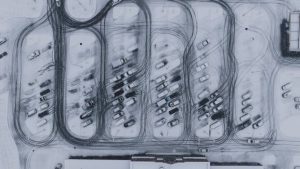ADAS Features: Lane-Keeping, Adaptive Cruise, and More
ADAS (Advanced Driver Assistance Systems) is a technology rapidly gaining popularity in the automotive world. With the increasing number of road accidents every day, car manufacturers and tech companies are investing in ADAS features to make driving safer and more convenient. ADAS features are designed to assist drivers in navigating the roads, preventing collisions, and improving overall driving experience. In this article, we will take a deep dive into some of the most popular ADAS features: Lane-Keeping, Adaptive Cruise, and more. Let’s explore how these features work and why they are essential for your driving experience.
What is ADAS?
ADAS is a set of advanced technologies installed in vehicles to enhance driving safety and convenience. These systems use cameras, radar, sensors, and other cutting-edge technologies to make the driving experience more comfortable and safe. ADAS features are not meant to replace human drivers; instead, they work in conjunction with drivers to reduce the risk of accidents and make driving more efficient.
Lane-Keeping
Lane-keeping, also known as lane departure warning, is an ADAS feature designed to prevent unintentional drifting out of the lane. The technology uses cameras or sensors placed on the car’s front to detect lane markings on the road. When the vehicle starts to leave its lane without signaling, the system will alert the driver through visual or audio warnings. In some systems, lane-keeping can also gently nudge the car back into its lane.
Driving fatigue is a common cause of accidents, and lane-keeping is an excellent tool to combat it. It is especially helpful for long drives when drivers tend to be less attentive. The feature is also beneficial in poor weather conditions, when visibility is limited, and driving is more challenging.
Adaptive Cruise
Adaptive cruise control is an advanced version of traditional cruise control. It uses a combination of sensors, radar, and cameras to maintain a safe distance from the vehicle in front. Traditional cruise control systems maintain a constant speed, regardless of other vehicles on the road. On the other hand, adaptive cruise control automatically adjusts the car’s speed to maintain a safe following distance based on the surrounding traffic.
The benefits of adaptive cruise control are multifold. First, it reduces the risk of rear-end collisions caused by tailgating. Second, it takes the stress out of driving in heavy traffic, where constantly braking and accelerating can be tiring for drivers. And third, it can even improve fuel efficiency by optimizing the car’s speed and acceleration.
Other ADAS Features
In addition to lane-keeping and adaptive cruise control, there are several other ADAS features that are gaining popularity. These include forward collision warning, automatic emergency braking, blind-spot monitoring, and rear cross-traffic alert. These features use various technologies to detect and alert drivers of potential hazards on the road. Some systems even have the capability to take corrective action to avoid or mitigate accidents.
ADAS features are becoming increasingly common in new vehicles. The good news is that they are not only limited to luxury cars but are also available in more affordable models. As the technology advances, more and more features are being added to make driving even safer and comfortable.
The Future of ADAS
With the rise of self-driving cars, ADAS is expected to play a significant role in the future of the automotive industry. As self-driving technology continues to evolve, ADAS features will serve as a stepping stone towards fully autonomous vehicles. Car manufacturers are investing heavily in research and development to make ADAS features more advanced and reliable, ultimately making the road a safer place for everyone.
In conclusion, ADAS features like lane-keeping, adaptive cruise control, and others have revolutionized the way we drive. These intelligent systems have significantly reduced the number of road accidents and improved the overall driving experience. As technology continues to evolve, we can expect to see even more advanced ADAS features in the future, making our roads safer and our drives more comfortable.










